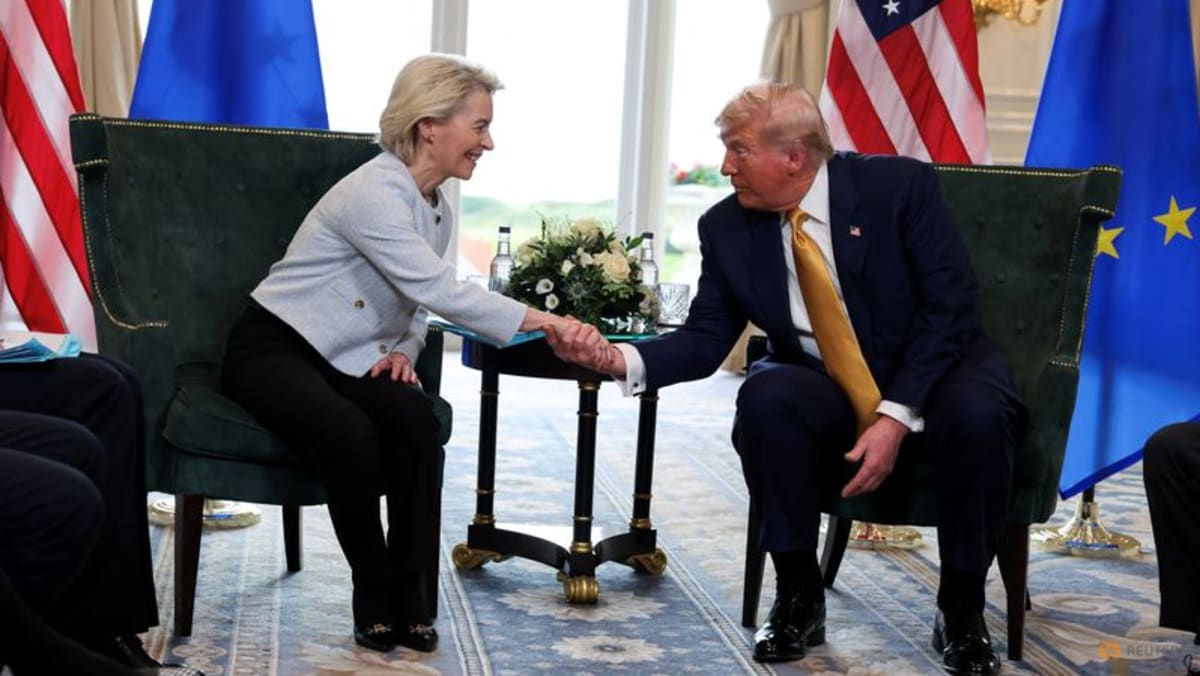The bloc had been pushing hard for tariff carve-outs for critical industries from aircraft to spirits, and its auto industry, crucial for France and Germany, is already reeling from the levies imposed so far.
“Fifteen percent is not to be underestimated, but it is the best we could get,” acknowledged von der Leyen.
Any deal will need to be approved by EU member states, whose ambassadors, on a visit to Greenland, were updated by the commission Sunday morning. They were set to meet again after the deal struck in Scotland.
German Chancellor Friedrich Merz rapidly hailed the deal, saying it avoided “needless escalation in transatlantic trade relations”.
But German exporters were less enthusiastic. The powerful BDI federation of industrial groups said the accord would have “considerable negative repercussions” while the country’s VCI chemical trade association said the accord left rates “too high”.
The EU had pushed for a compromise on steel that could allow a certain quota into the US before tariffs would apply.
Trump appeared to rule that out, saying steel was “staying the way it is”, but the EU chief insisted later that “tariffs will be cut and a quota system will be put in place” for steel.
“THE BIG ONE”
While 15 per cent is much higher than pre-existing US tariffs on European goods, which average around 4.8 per cent, it mirrors the status quo, with companies currently facing an additional flat rate of 10 per cent.
Had the talks failed, EU states had greenlit counter tariffs on US$109 billion of US goods including aircraft and cars to take effect in stages from Aug 7.
Trump has embarked on a campaign to reshape US trade with the world, and has vowed to hit dozens of countries with punitive tariffs if they do not reach a pact with Washington by Aug 1.
Asked what the next deal would be, Trump replied: “This was the big one. This is the biggest of them all.”
